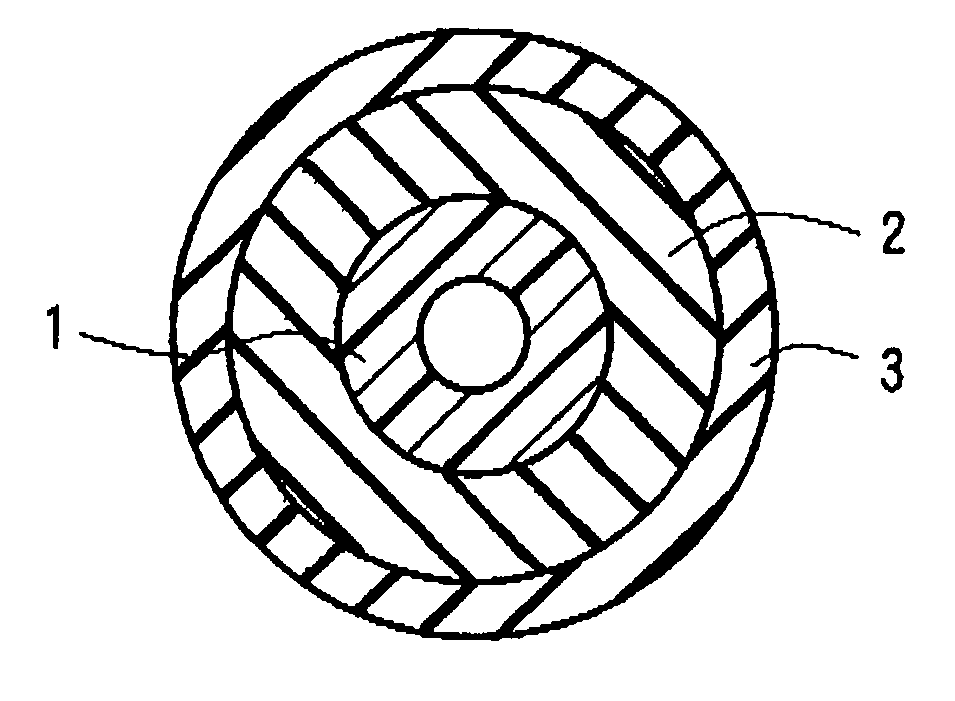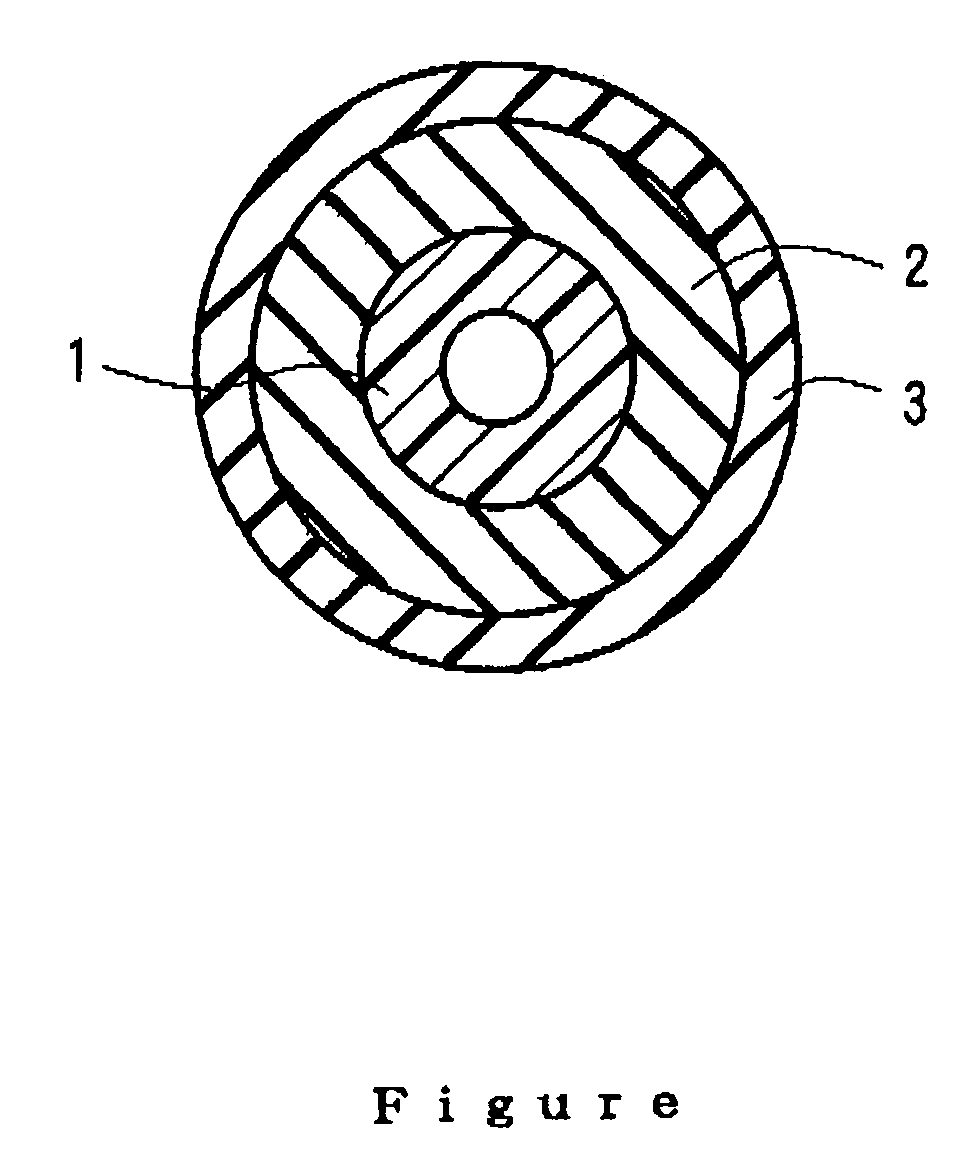Sheet feeding roller
a feeding roller and sheet technology, applied in the direction of rollers, shafts and bearings, thin material processing, etc., can solve the problems of high cost of sheet feeding rollers, single elastic layer feeding rollers with limited hardness reduction, etc., and achieve the effect of improving paper transportability and reducing production costs
- Summary
- Abstract
- Description
- Claims
- Application Information
AI Technical Summary
Benefits of technology
Problems solved by technology
Method used
Image
Examples
example 1
[0032]A sheet feeding roller was produced by using the following materials such that the inner layer has an Asker-C hardness of 20 degrees, the outer layer has a JIS-A hardness of 40 degrees and a JIS-A hardness (total JIS-A hardness) measured from the outer layer side of an integral laminate of the inner layer and the outer layer is 5 degrees. As for the Asker-C hardness of the inner layer and the JIS-A hardness of the outer layer, each specimen for the inner layer and the outer layer was produced by an inner layer only and an outer layer only, respectively, and the thus obtained specimen was used for such measurement.
Preparation of Non-crosslinked Thermosetting Urethane Rubber for Forming an Inner Layer
[0033]Non-crosslinked thermosetting urethane rubber for forming an inner layer was prepared by mixing 4 parts by weight of a chain lengthening agent (trimethylolpropane (TMP)), 50 parts by weight of a plasticizer (dibutyl carbitol adipate; ADEKA CIZER RS705 available from Asahi Denk...
example 2
[0037]A sheet feeding roller was produced by using the following materials such that the inner layer has an Asker-C hardness of 30 degrees, the outer layer has a JIS-A hardness of 50 degrees and a JIS-A hardness (total JIS-A hardness) measured from the outer layer side of an integral laminate of the inner layer and the outer layer is 10 degrees. The sheet feeding roller was produced in substantially the same manner as in Example 1.
Preparation of Non-crosslinked Thermosetting Urethane Rubber for Forming an Inner Layer
[0038]Non-crosslinked thermosetting urethane rubber for forming an inner layer was prepared in substantially the same manner as in Example 1, except that the amount of a plasticizer was changed to 35 parts by weight.
Preparation of Non-crosslinked Thermosetting Urethane Rubber for Forming an Outer Layer
[0039]Non-crosslinked thermosetting urethane rubber for forming an outer layer was prepared in substantially the same manner as in Example 1, except that the amount of poly...
example 3
[0040]A sheet feeding roller was produced by using the following materials such that the inner layer has an Asker-C hardness of 50 degrees, the outer layer has a JIS-A hardness of 70 degrees and a JIS-A hardness (total JIS-A hardness) measured from the outer layer side of an integral laminate of the inner layer and the outer layer is 30 degrees. The sheet feeding roller was produced in substantially the same manner as in Example 1.
Preparation of Non-crosslinked Thermosetting Urethane Rubber for Forming an Inner Layer
[0041]Non-crosslinked thermosetting urethane rubber for forming an inner layer was prepared in substantially the same manner as in Example 1, except that the amount of a plasticizer was changed to 20 parts by weight.
Preparation of Non-crosslinked Thermosetting Urethane Rubber for Forming an Outer Layer
[0042]Non-crosslinked thermosetting urethane rubber for forming an outer layer was prepared in substantially the same manner as in Example 1, except that each amount of pol...
PUM
 Login to View More
Login to View More Abstract
Description
Claims
Application Information
 Login to View More
Login to View More - R&D
- Intellectual Property
- Life Sciences
- Materials
- Tech Scout
- Unparalleled Data Quality
- Higher Quality Content
- 60% Fewer Hallucinations
Browse by: Latest US Patents, China's latest patents, Technical Efficacy Thesaurus, Application Domain, Technology Topic, Popular Technical Reports.
© 2025 PatSnap. All rights reserved.Legal|Privacy policy|Modern Slavery Act Transparency Statement|Sitemap|About US| Contact US: help@patsnap.com


